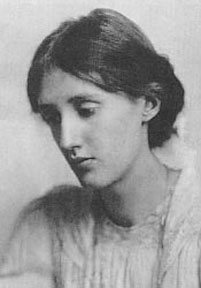本帖最后由 retro 于 2013-7-24 12:24 PM 编辑
(二)
Our democratic unease is understandable, since the alleged superiority of high culture has often supported the pretensions of an aristocratic class claiming to have privileged access to it. For example, Virginia Woolf’s classic essay — arch, snobbish, and very funny — reserved the appreciation of great art to “highbrows”: those “thoroughbreds of the mind” who combine innate taste with sufficient inherited wealth to sustain a life entirely dedicated to art. Lowbrows were working-class people who had neither the taste nor the time for the artistic life. Woolf claimed to admire lowbrows, who did the work highbrows like herself could not and accepted their cultural inferiority. But she expresses only disdain for a third class — the “middlebrows”— who have earned (probably through trade) enough money to purchase the marks of a high culture that they could never properly appreciate. Middlebrows pursue “no single object, neither art itself nor life itself, but both mixed indistinguishably, and rather nastily, with money, fame, power, or prestige.”
【译】我们民主的不高兴可以理解,因为所谓高雅文化优越,经常支持贵族阶层声言拥有接触这种文化特权的声势。举个例子,弗吉尼亚·沃尔芙[4]的经典散文,优雅,傲气,又很有趣,蕴含“高眉”欣赏的优秀艺术。那是“精神贵族”;他们品味天赋加上遗产丰厚,足以终养艺术为生。低眉指工人阶级,既无品味,又无时间投身艺术活动。沃尔芙宣称羡慕低眉,他们能做像她那样的高眉做不到的工作,并接受他们文化上的粗糙。但她仅表示鄙视第三阶层,“中眉”;那些(可能通过贸易)赚大钱的人,购买他们从不懂欣赏的高雅文化标志。中眉追崇“无明确物,既非艺术本质,也不是生活本身。但两者跟金钱,名气,权力,或品牌混杂不清,相当低俗。”
【注4】弗吉尼亚·沃尔芙(1882-1941),出身名门贵族,20世纪初英国文坛才女。

【解】沃尔芙的“三眉论”在文化概念上表述三种人:高眉人,即文化知识精英;词源来自古希腊颅腔相学(Phrenology)——眉额高,智慧高。反之低眉者,劳动人民也。不高不低的中眉阶层,泛指新富贵群体。这类人的品质,经沃尔芙这么一说,从此与“庸俗”,“附庸”同义。
【评】毋庸讳言,“三眉论”用人生贵贱归类人们的文化属性,是高贵者高而不明之处。中国的封建历史更长,“自将磨洗认前朝”(《杜牧·赤壁》)的故事很多,对“血统论”早有高见。公元前低眉人陈胜吴广造反时,就高喊:“王侯将相宁有种乎?”意思是,王公贵族的血统从哪里来的?——套用毛氏的一句话“从群众中来……”
那么,民主社会的高眉从那里来?
|